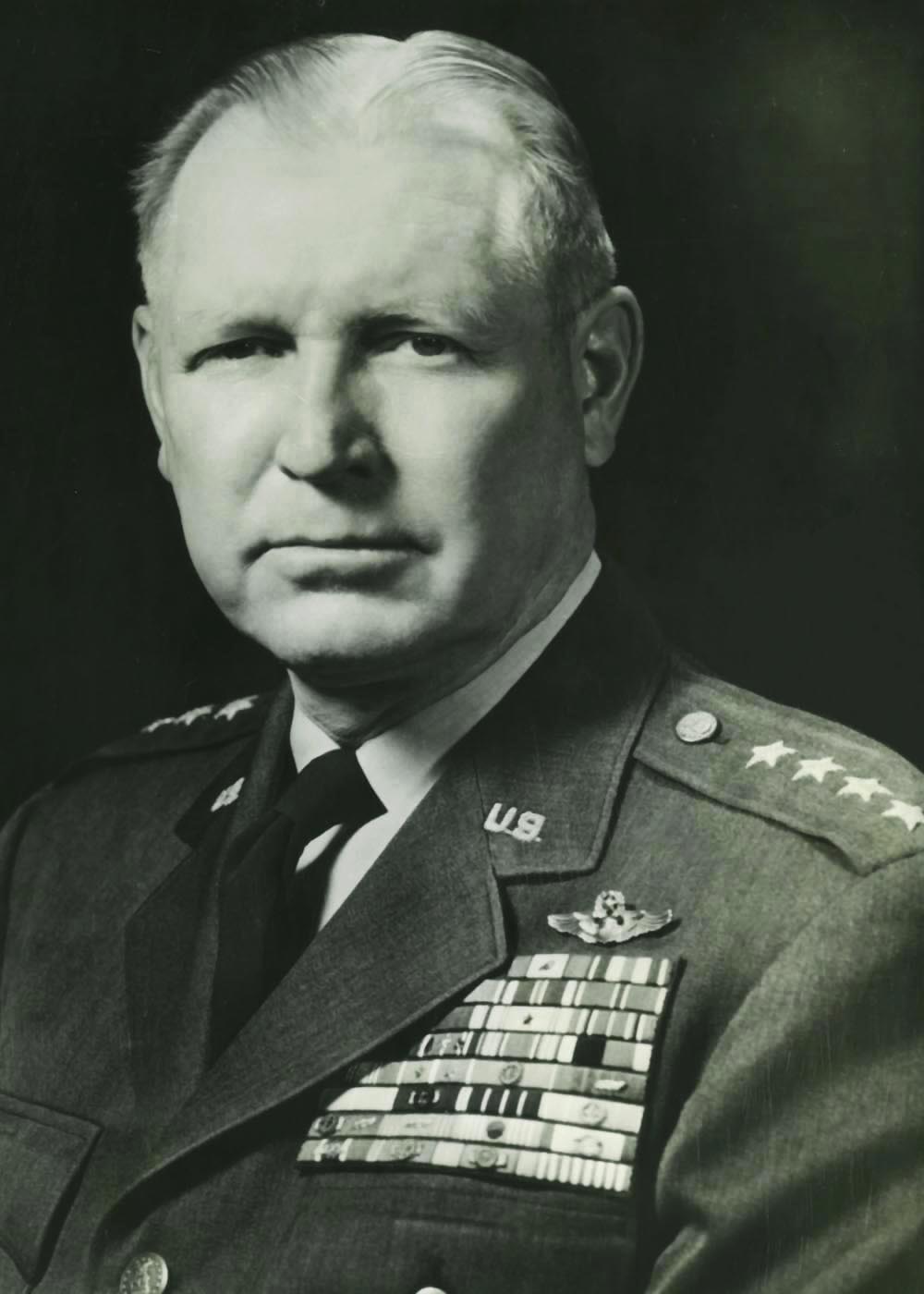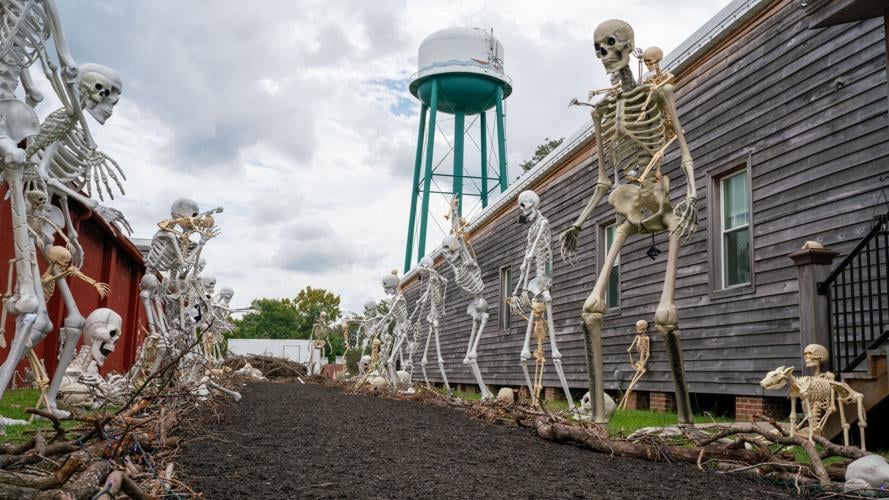General O.P. Weyland, Commander of the Tactical Air Command for the United States Air Force, gave the address reinstating the 354th at Myrtle Beach Air Force Base. — Photo U.S. Air Force
The Makings of a Base to Remember
by Melissa LaScaleia
Construction on the Myrtle Beach Air Force Base officially began in 1941. And in the ensuing years, the base and all who were involved in it played a prominent role in defense of our homeland as well as offensive attacks during WWI, WWII, the Korean War, the Vietnam Conflict, the Cold War, and the Iraq conflict, to name just a few. Instrumental in the history and illustrious repute of the Myrtle Beach Base is the 354th Fighter Wing.
The wing began its history anew on November 19, 1956, when the Air Force redesignated the base’s 342nd Fighter Day Wing as the 354th Fighter Day Wing. All the history, battle honors, and awards earned by the 354th Fighter Group during World War II were transferred to the new wing.
On December 7, 1956, General O. P. Weyland, Commander of the Tactical Air Command for the United States Air Force, gave an address at the Myrtle Beach Air Force Base during a ceremony commemorating the reactivation of the 354th Fighter Day Wing.
In it, he expressed the pride of the Air Force in reactivating such a high-caliber unit at such a high-caliber base. He also shared that the wing would be operating one of the “latest supersonic series of aircraft” in operation by the Air Force to date— the F-100D.
He said: “These are fast, powerful aircraft and make some noise— but this noise is significant as the sound of progress and the sound of peace. These aircraft represent not only protection for our homes but for our very way of life. It is a comforting thought to remember.”
The aircraft were the first supersonic aircraft and the first of the “Century Series” in the Air Force. After much planning, research, and craftsmanship, the F-100D came to fruition. Powered by the J-57 engine, and forged by Pratt and Whitney, it was truly in a class of its own. The aircraft was a tribute to American ingenuity, technology, and innovation.
General Weyland continued his address: “We are about to mix these ingredients— a unit with an outstanding record, an outstanding airplane, a fine air base, a community that has displayed outstanding cooperation and hospitality to the officers and airmen selected to man this unit, and most important, military leadership of outstanding quality— for Colonel Gabreski, new commander of the 354th, is one of the best known of the old professional fighter hands. He was an outstanding ace in World War II, and became a jet ace under me during the Korean War. With these ingredients, we can’t go wrong.”
Colonel Weyland presented Colonel Gabreski with the official wing flag of the 354th Fighter Day Wing to symbolize the complete reactivation of the wing.
To this day, Myrtle Beach still retains the tradition of hospitality and community support for which is was known more than 50 years ago. Those who come here are touched by how welcoming and supportive people are to one another, and in supporting community dreams.
The 354th was a wing to remember. It remained in active service until March 31, 1993, when the Myrtle Beach Air Force Base was officially closed. The wing was reactivated some months later, on August 20, 1993, at Eielson Air Force Base, Alaska, where it is still in operation today.
You can view the plaque commemorating this event and the full speech at the intersection of Farrow Parkway and South Kings Highway in Warbird Park.

















